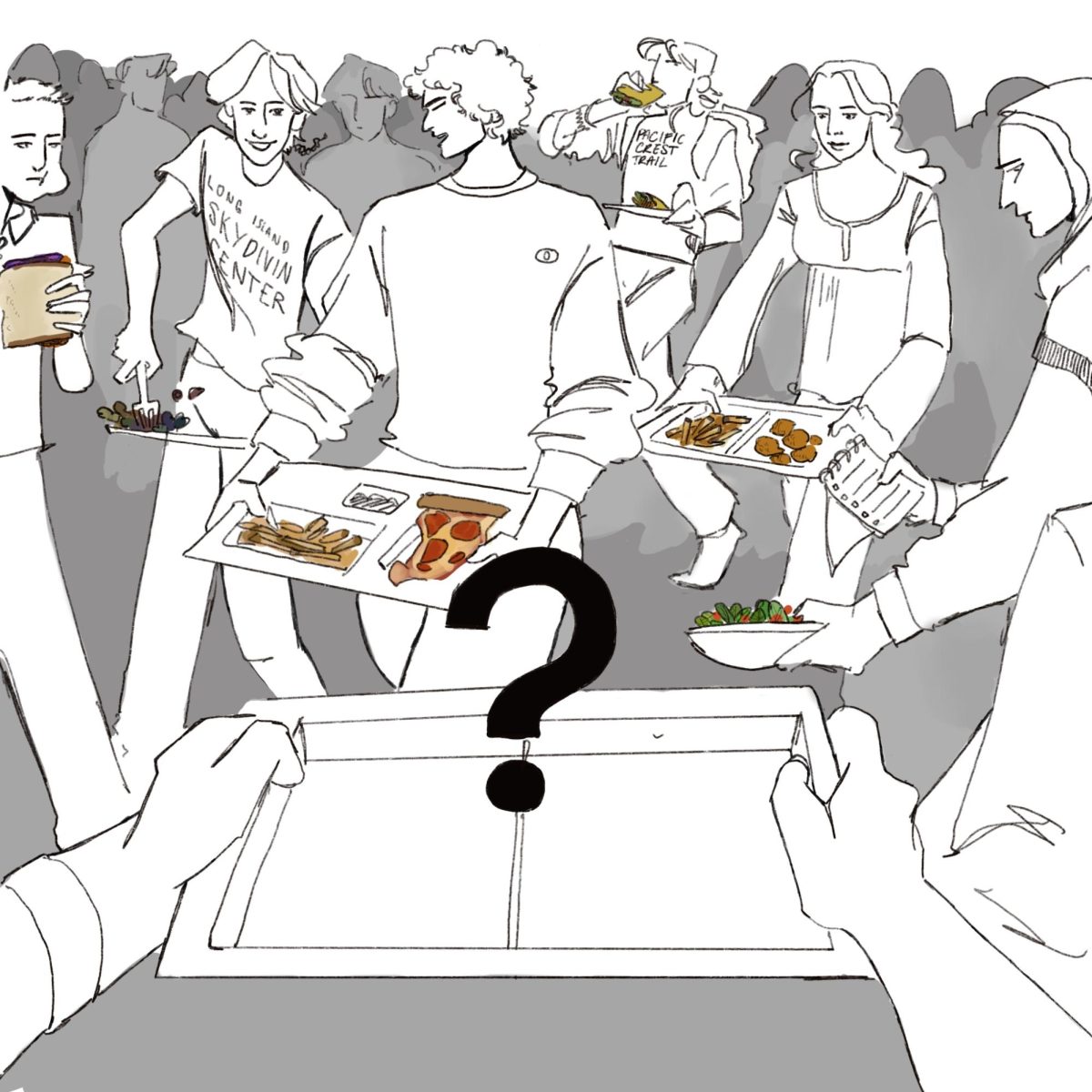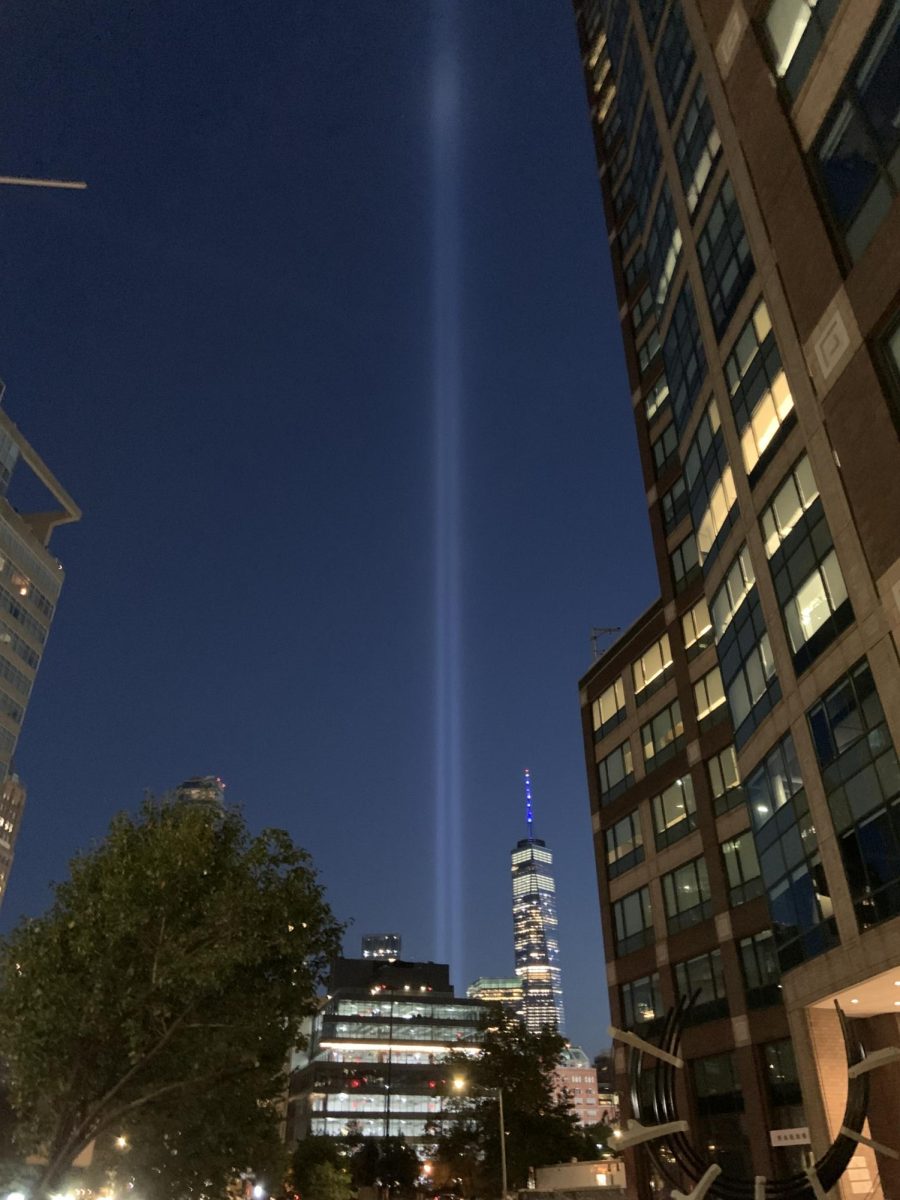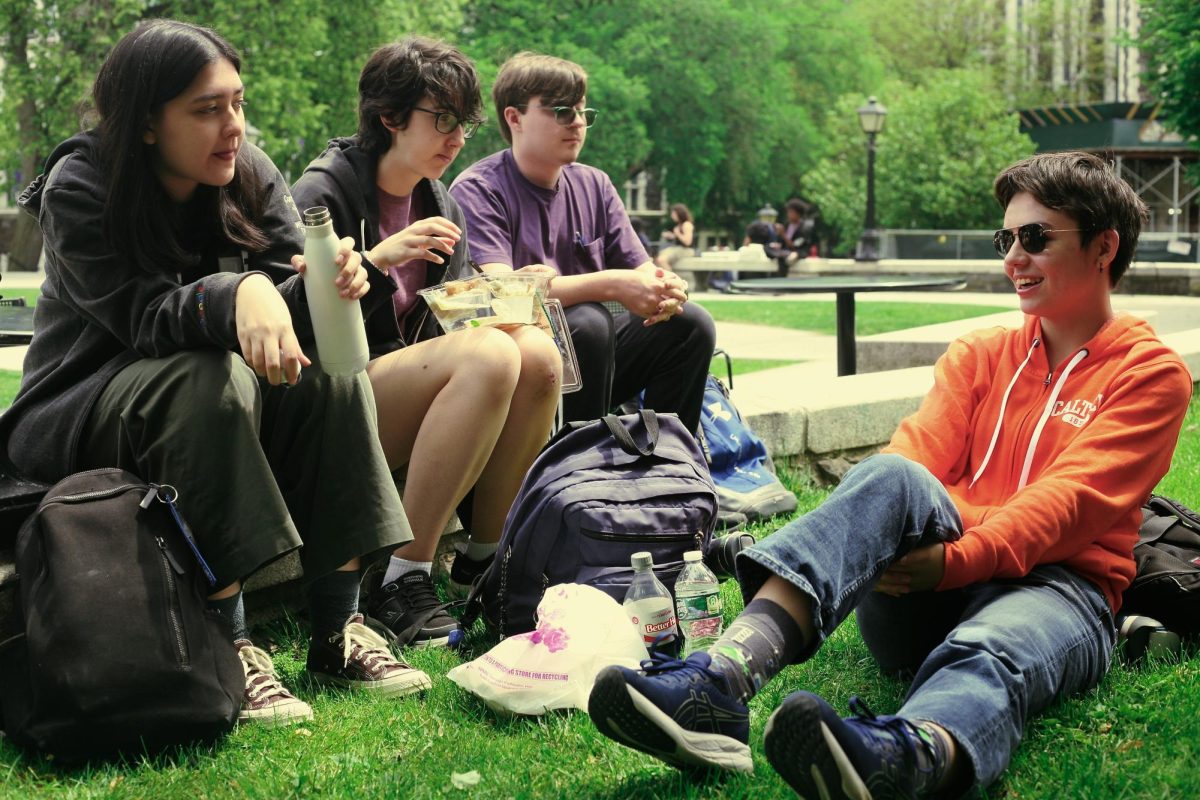As a school filled to the brim with STEM kids, there’s not that much interaction between us and the more humanities or arts-focused sides of high school. So when I made the choice to go to the Summer Arts Institute (SAI), I didn’t expect to see anyone I knew there; I was only really expecting a new experience where I could meet new people. Imagine my surprise, however, when I walked into the bathroom on the very first day and ran smack-dab into one of my friends from The Echo, of all places!
Surprisingly, there’s more to us STEM kids than graphs or math. There are people who like performing music, dancing, and even acting! And nowhere is better for you to engage in your favorite art forms than SAI, an arts conservatory located at Frank Sinatra School of the Arts in Astoria, Queens. Available to rising seventh through twelfth graders, students who attend are separated into studios of different fields of the arts: Visual Art, Vocal Music, Dance, Theater, Film, String Orchestra, and Concert Band. It spans four weeks in July: The first two weeks are dedicated to learning the material that will later be showcased, the third week contains a private showcase for the parents of each studio, and the fourth week includes one final showcase including material from all the different studios, where all the parents can come and watch.
Throughout the summer, the students also take part in different events. Field trips regularly occur to give students insight into how various art forms combine to create the masterpieces performed in theaters. Additionally, talent shows allow students to express themselves in art forms that are not necessarily part of the studio they’re in. For example, someone in the String Orchestra studio could act, or someone in the Theater studio could sing a song. There is no restriction on what students are allowed to perform, as long as it’s school appropriate and fits within the time allotted. This program is phenomenal for any kid wanting to explore their art form on a deeper level. But don’t just take our word for it! We asked several people who participated this past summer for their thoughts about SAI, and here’s what they had to say.
These interviews have been edited for clarity.
What was your favorite part of SAI? The hardest part?
- Alegra Blum, Strings, violin 1: My favorite part of the program was improving my violin skills and playing for six hours a day. The hardest part was trying to keep up with the music in the fast-paced environment.
- Matthew Yang, Strings, viola: My favorite part was playing a Mendelssohn octet. The hardest part was keeping up with everyone else’s demands, [particularly the composer’s].
- Paul Perdikis, High School Theater: Favorite part and hardest part were probably the fact that we were given the opportunity to write our own scene. It’s not an easy thing to do, I remember we had to workshop it a lot. But even though it was completely different than [what] we started with, it was really rewarding to perform it and to make everyone laugh.
- Mr. Barry Stern, Strings, Teacher: Being able to bring [the music of] Hindemith back into my life after first experiencing it as a teenager in a summer program where I was a student. I love full circles.
How would you rate the difficulty of the program overall?
- AB: It was very fast paced and you have to be able to read music.
- MY: It was an 8/10. The [Mendelssohn] octet was just one example of the difficult repertoire, which also included chamber pieces.
- PP: I would give it an 8/10, only because the dance was pretty hard for me.
- BS: I don’t find the program difficult at all! In fact, the program is easy to navigate and teach because we are teaching kids who (mostly) are happy to be there and be immersed in something they want to do. It’s a lot different than what we do during the school year. The easy part is that no one has to buy what we’re selling. Students are already invested.
How would you rate the difficulty of the song and the dance?
- PP: As someone with little to no singing/dancing experience, I’ll stick with an eight. The dance, specifically, we were having a bit of trouble locking in. I remember we were making changes all the way up to the last minute, but it was things that kinda threw you off a little bit, and I think it came out very well, but I’m surprised because I was having a lot of struggles with it. When I got [the dance] down, it was really fulfilling, but it was something [that took a fair amount of time and effort to get down]. It’s the only thing out of all the parts we did that I thought looked only okay.
If you had to describe SAI using only three words, what would they be?
- AB: Death noodles, fun, incredible learning experience. Oh wait, I could just say that. “Incredible learning experience” is three words, after all!
- Note: There will be an audio recording of the relevant section available here. Listen to it to find out what the death noodles are!
- MY: Cooperative, eye-opening, motivating.
- PP: Fulfilling, fun, enthusiastic.
- BS: Challenging, immersive, transformative.
How bad was the air conditioning in the room you spent most of your time in?
(The Strings studio was stuck in a room that we dubbed the “hot box” because of the awful air conditioning. There was a big yellow fan outside the door that helped a little bit.)
- AB: Very [bad]. It worked every other week and it only worked when it got a little colder outside.
- MY: Not that bad, actually, considering they fixed it halfway through.
- PP: There were some days when I did feel a little too cold or too hot, but it never really hindered my experience.
- BS: Unmanageable. At least for me.
How do you think the program turned out as a whole?
- AB: I think it turned out really well. We managed to put together like five [pieces]. The final concert went really well. We had to do some improvising, which allowed us to learn new techniques.
- MY: The concert went well and it taught me how to appreciate the joy of performing, especially after the work it took to get there.
- BS: Every summer, I feel an interesting blend of challenge and excitement. I find it fulfilling to see students grow creatively and personally in such a short, focused time. At the same time, the intensity of the program demands a lot of energy, making it both rewarding and exhausting. I can’t lie: I look forward to August every year as well so I can finally rest a little! The immersion can create a deep sense of connection [between] students and the art, leaving a lasting impact on everyone involved. The program in general offers something for FREE that no other program can offer, and I’ve always been grateful to be a part of that. Every summer, we send students back to their schools in a much better position to make those [other] programs better. That can’t be understated.
What was the most difficult piece to play or conduct?
- AB: Dvořák! It was a challenging piece that also improved [my] technical abilities and was really fun to play.
- MY: The [Mendelssohn] octet, 100%.
- BS: Last summer, there was nothing particularly challenging for me personally, but the hardest to teach would’ve been Dvořák.
Are you pleased with how your Dvořák redemption tour turned out?
(The Strings studio rehearsed the Dvořák Serenade for Strings in E Major, Op. 22, in the summer of 2023, and it went very poorly. As a result, the piece got cut from the program last-minute.)
- BS: I’m pleased with how it ended. Two summers ago, I had to cancel a piece for the first time in my life. I wasn’t happy. This summer more than made up for that, and I hope I never have to redeem myself again!
Why do you think the arts matter in this world?
- AB: They allow people to express themselves in different ways, such as playing an instrument, and allow people to communicate and spend time with others.
- MY: The world would be bland and dull if we only focused on the “important” subjects that we “need,” such as STEM and English classes. If we only focused on those, then the world wouldn’t be as interesting.
- PP: They allow people to express themselves. If people can’t express themselves, then everyone’s gonna think that they’re alone in their experiences. But the arts allow people to show their experiences, and they also allow people to see the experiences of others. A lot of people don’t realize that what they’re going through is something that everyone else goes through, and the arts allow people to realize that and find comfort in community.
- BS: The arts matter because they inspire creativity, foster empathy, and shape cultural identity. They allow us to express and explore complex emotions, communicate across differences, and reflect on our own experiences. Through the arts, we can preserve our histories and push our boundaries, and encourage creative thinking and personal growth.
How highly do you value arts education and why?
- BS: I value arts education as much as I value anything because it nurtures essential skills that go beyond the arts themselves. It fosters critical…and [innovative thinking]. By engaging with different forms of artistic expression, students learn to connect with others and the world around them in meaningful, transformative ways. Ultimately, the arts enrich both individual lives and society as a whole and sets students up to be greater contributors to that society in the future.
Was the experience worthwhile? Would you apply again?
- AB: Yes, it was very worthwhile. I would definitely apply again because of how much I improved and the wonderful opportunities I got, like playing in a lot of different places.
- MY: Yes, it was worth it. I would apply again, but I’m keeping my mind open to other options.
- PP: SAI is free, but even if it was hundreds of dollars it would still have been worth it. I did something I loved to do; [in] the first week, you’re just getting to know everyone, the second week, we’re working, making sure everything works out great, and the rest of the month we’re just, hitting home runs, and feeling great about ourselves, because you’re making people laugh, you’re entertaining them, and there’s nothing like putting on a show. If I could [apply again], I definitely would. I was actually really really sad on the last day when I was thinking about it. I never knew about this program before, I didn’t go in years past because I didn’t know it existed, and that’s especially sad because I can’t go again; I’m graduating.
The arts are an integral part of our culture, consumed by everyone daily. In the hectic world that we live in, appreciating the arts is more important than ever. We all attend a school that focuses on STEM and has next to nothing in the way of arts. As such, the arts need to be fostered outside of school, and SAI does just that. Playing an instrument, drawing, and other art forms can be the only thing keeping someone sane. Ultimately, the arts are a major part of daily life that our school does little for. Programs like SAI are an important opportunity to express one’s creative voice when one may rarely get that opportunity otherwise. You might not expect to find your people at SAI, but take it from us, you do.
If you’re wondering about certain pieces referenced in this article, there will be audio examples published on theechohsmse.com that will explain everything. Look out for those in addition to the normal article and some other clips from SAI in the coming weeks.
























